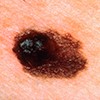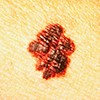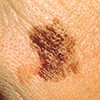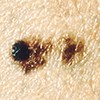Skin Smart Campus Initiative

Oregon Health & Science University (OHSU) follows the principles of a Skin Smart Campus as defined by the National Council on Skin Cancer Prevention. To ensure the well-being of our students, we are providing a safe and healthy learning and living environment on and off campus and pledging to keep indoor tanning devices off our campus and our affiliated buildings. We also promote skin cancer prevention policies and education.
The Indoor Tan-Free Skin Smart Campus Initiative is sponsored by the National Council on Skin Cancer Prevention in response to the 2014 U.S. Surgeon General’s Call to Action to Prevent Skin Cancer, which concluded that there is a strong association between the increased risk of skin cancer and indoor tanning use.
- Skin cancer is the most common cancer in the United States.
- The two most common skin cancers (basal cell and squamous cell carcinomas) are highly curable but can be disfiguring and costly.
- Melanoma (the third most common skin cancer) may be deadly.
- 1 in 5 Americans will develop skin cancer before the age of 70.
- Oregon is among the top third of states for melanoma cases.
- When detected early, melanoma has a 5-year survival rate of 99%.
- Light skin, or skin that burns, freckles, or reddens easily; but skin of all colors can get skin cancer
- Large number of moles
- Personal or family history of skin cancer
- History of sun exposure
- History of sunburns, especially in early life
- History of indoor tanning
- To check your own risk, click this link: https://startseeingmelanoma.com/check-your-risk/
- The average tanning bed gives of 2 to 10 times more UVA radiation than the sun.
- Using tanning beds before the age of 35 increases a person's risk for developing melanoma by 75%.
- One study observing 63 women diagnosed with melanoma before age 30 found that 61 of them (97 percent) had used tanning beds.
- Tanning beds are classified in the same carcinogen category as tobacco, asbestos, and arsenic.
- One study observing 63 women diagnosed with melanoma before age 30 found that 61 of them (97 percent) had used tanning beds.
- Seeking shade
- Protective clothing
- Long sleeves/pants with a dense weave or built-in UPF
- Wide-brimmed hat
- Closed-toe shoes and socks that cover the ankle
- Sunglasses
- Wearing Sunscreen
- Broad spectrum UVA and UVB, SPF 30 or higher
- Reapplication is necessary every 2 hours and after swimming, sweating, or toweling off.

Asymmetry: If you drew a line down the center of a normal mole, the two halves should match. With a Melanoma, one side is often not like the other.

Border: Borders of a melanoma are often jagged and uneven.

Color: If the color of a mole is varied throughout, such as shades of brown, black or tan; or they can even have patches of red, white, blue, or pink.

Diameter: If the mole is bigger than about 6 mm or the size of a pencil eraser that can be a sign of melanoma.

Evolving: Unlike a normal mole, a melanoma may change in color, shape, or size over time.
- National Council on Skin Cancer Prevention:
- Start Seeing Melanoma:
- Skin Cancer Foundation:
- American Academy of Dermatology:
- Tanning. Skin Cancer Foundation. Published 2016. Accessed July 14, 2022.
- Indoor tanning restrictions for minors — a state-by-state comparison. NCSL, National Conference of State Legislatures. http://www.ncsl.org/research/health/indoor-tanning-restrictions.aspx. Accessed July 14, 2022.
- Skin Cancer Facts & Statistics. Skin Cancer Foundation. https://www.skincancer.org/skin-cancer-information/skin-cancer-facts/?f…. Published 2022. Accessed July 14, 2022.